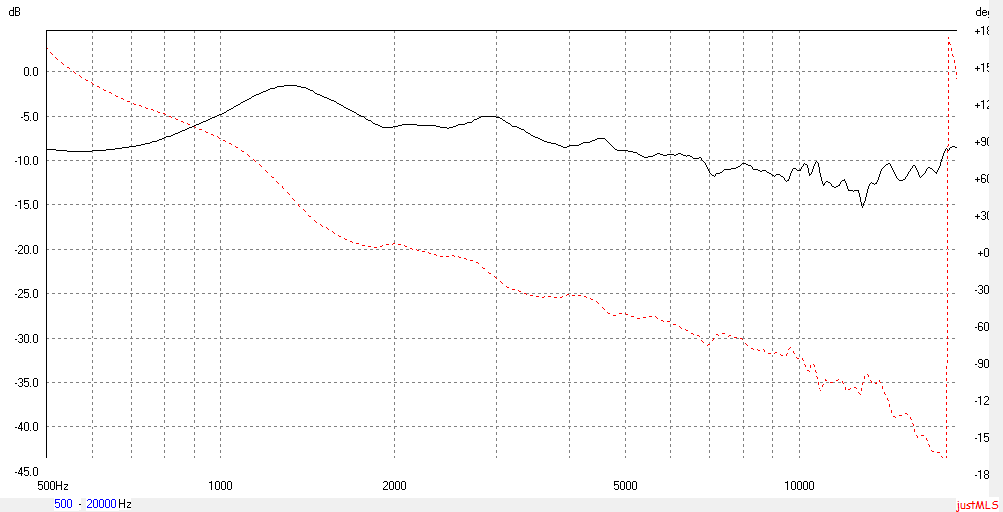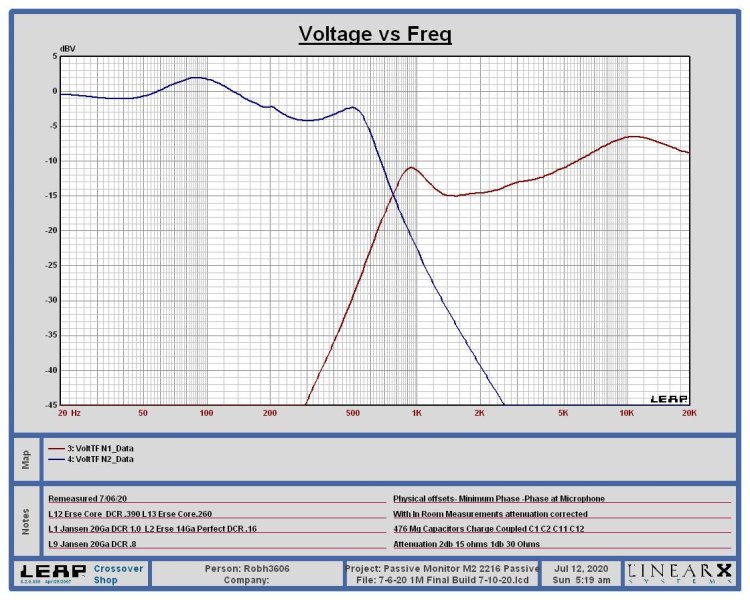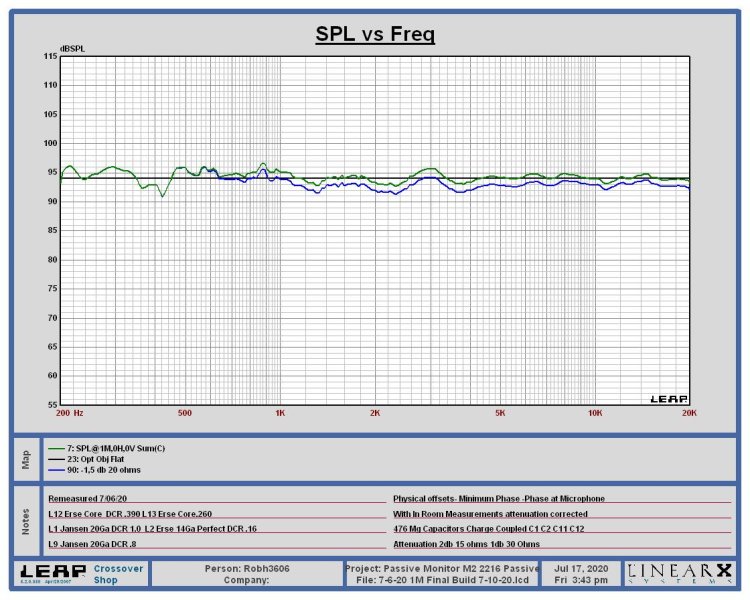I should have asked this earlier but what would be the tradeoffs of using a 90 x 60 vs. a 90 x 80 or 90 x 40 constant directivity horn for my ~ 12 ft wide corner listening space, with me normally seated (sometimes standing) ~ 9 to 10 ft feet and the speakers accordingly placed apart (and the subs alongside them) within that corner? Is it mostly a preference thing or-for my listening space and location-is one coverage pair better at conveying accurate imaging cues, realism,
Obviously the narrower vertical patterns will concentrate the top-octave energy into a narrow vertical listening window moreso that the wider vertical angles do. One implication of this is that a narrow vertical angle can result in a greater spectral discrepancy between the direct sound and the reflection field, but on the other hand a narrower vertical angle will result in a bit higher SPL capability within that angle.
This brings up something that I had FAILED to take into account: The very wide pattern of the M2's waveguide (nominally 120 degrees horizontal by 100 degrees vertical) means that the top-end energy isn't being concentrated into a narrow angle. So imo it is entirely possible that the M2 waveguide/compression driver combination will NOT "keep up with" your high-efficiency Altecs in the top octave. My apologies for jumping the gun by saying the M2's waveguide would work well for you; I failed to take into account the unusually high efficiency of the Altecs.
@Robh3606, do you have any thoughts about this?
My personal preference is for a gently downward-sloping frequency response for the direct sound, but many people prefer a "flat" frequency response for the direct sound. If that is your preference, then something with a narrower angle than the M2's waveguide might work better for you.
[Lynn Olsen] seems to be saying two things that concern me about 90 degree wide horns: 1.) I don't understand what Lynn is saying about drivers with 90 degree wide coverage and whether he's only concerned with spatial cues within the recording and not about ways to ensure the clarity of same. Does he think that (which? ) constant directivity horns will cause destructive reflections and smear imaging, disrupt power response among causing other sonic damage?
It looks to me like Lynn is focusing on the individual first reflections, which are mostly outside of the 90-degree cone of something like Earl Geddes' waveguides. I think it's good that those reflections are outside the cone because that means they will be weak; he thinks it's bad because their spectra will be incorrect. It's not clear to me how something like a L'Cleach horn does better in this respect.
2.) Is the "hard edge to the coverage pattern" is he referring to where to horns's polar pattern near the crossover point the midwoofers? If so, what's the big problem for a 15" midwoofer, if as long as what Cask05 said here that the waveguide's constant directivity is maintained down to where it will cross with the woofer; that is, where its width is also the wavelength about where they have to blend. So for 15" woofer that's ~900Hz or ~ 15".
I think he's talking about what happens when you go beyond the edge of the waveguide's pattern. You'll still have off-axis energy from the middwoofer, but not very much from the waveguide. My opinion is that our perception is influenced by the overall spectral balance of the reflection field moreso than the spectral balance of individual reflections, and the overall spectral balance of the reflection field includes all of the reflection energy that originated within the waveguide's coverage pattern.
(Imo the reflection field WILL BE a little bit short of energy in the waveguide's portion of the spectrum for the reason Lynn gives, and addressing this is one of the things my rear-firing drivers theoretically do, but ime this additional reflection energy does not make a night-and-day difference in the overall spectral balance.)
So while it's kind of ironic that Lynn also mentions that JMLC are great for HT dialog (the original subject of this thread, though of obvious lesser concern at this point), I don't really see what Lynn's big problems with at least most constant directivity horns.
I'm sure that's true for listeners along the centerline between the speakers. The advantage of constant-directivity and time/intensity trading is good results in phantom center mode even for listeners well to one side or the other of the centerline, assuming they have normal hearing.
I don't know if there were significant distortion issues with the driver. And while it's praised for very low distortion at high SPLs that's hardly something I need, versus zero fatiguing, relaxed smooth sound.
Earl Geddes doesn't lose any sleep over THD numbers for compression drivers operated well within their power and frequency limits, and neither do I.
I try to avoid nasty break-up in the top octave, and ime Beryllium and polymer diaphragms are generally more benign than Titanium in this regard, but imo it's a case-by-case thing.
Thus, after deciding on a horn I was going to discuss drivers. Those like 18Sound, Radian, JBL and other brands making beryllium drivers, what speakers using which Be drivers might you have heard? If yes, how much and for what performance reasons did the sound make you smile or not?
I've used Radian Beryllium drivers and think very highly of them. Note that their lack of top-octave break-up means they have less top-octave energy than their Aluminum counterparts.
Also, which JBL or other brand drivers might you have heard which had Aquaplas or a similar coating applied to their diaphragms? How did their sound impress you?
I don't have relevant experience with JBL drivers.
ALSO! Found very important info from Erin's review of the complete JBL M2 speaker.
https://www.erinsaudiocorner.com/loudspeakers/jbl_m2/ Of course, the cabinet and driver performance below the waveguide is of little interest, but please check out all other relevant measurements, including those x & y directivity plot versus those of ME90. AND please be sure to read the concluding Parting / Random Thoughts section, comparing this
WIDE coverage waveguide to all others discussed versus my situation and our mutual listening goals.
With your corner-oriented set-up geometry, there will be same-side-wall reflections from the M2's 120-degree-wide horizontal coverage, BUT because of the angle of the walls where those refections occur, they will MISS the listening area. Those reflections will pass BEHIND the listening area so for all practical purposes they will no longer be "early" reflections.





















